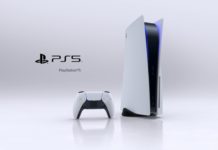With its
touch screen and dual view, Nintendo DS is the perfect handheld for strategy
games. Who needs point-and-click responses when you could touch, drag, and
release?
At least
that was the assumed path DS developers would (could?) take. Thus far the
system’s most prestigious strategy game has been Advance Wars, a title that
plays better with a D-pad than a stylus.
That makes
Steel Horizon the first of its kind – a strategy game whose touch-screen
controls are superior to the directional buttons. World map locations are
selected with a tap of the stylus. Each map is condensed to a 20×32 grid
that’s similar to (but more expansive than) the grid in Milton Bradley’s
electronic board game, Battleship.

Steel
Horizon puts you in charge of the world’s most cutting-edge warships. You
command fleets, not individual units, though you may link eight of your
toughest battlers for the ultimate enemy pounding.
Use
battleships and battlecruisers to hammer opposing forces. Annihilate would-be
powerhouses with destroyers, submarines, and mine layers. Take control of
enemy and neutral territory with specialized landing craft, and heal those who
have been damaged using repair ships.
One to eight
ships may be applied to any given fleet, which appears on the world map as one
unit. The benefit of dispersing ships is tempting (greater presence over
enemies) but dangerous (less strength in combat). Eight battleships should be
able to withstand an assault from most adversaries, even if the enemy strikes
with eight equally powerful ships. But if you disperse your units and receive
the same attack, your chances of survival are greatly reduced.
Fleets are
selected very easily using the D-pad or touch screen. Tap any ship or base on
the map and the game will jump to its location. From there a circular menu
will appear, asking if you’d like to move forward, change the standing
position (where the front of the ship is pointed), or end the turn. You may
also use this menu to look up ship info, double-check objectives, or to modify
fleet size and ship placement.
Park two
fleets next to each other to swap ships. The first mission will teach you that
your first objective should be to assign the toughest ships available to one
fleet. Keep adding ships until you’ve reached the maximum number allowed
(eight), then use that fleet to ward off the majority of the mission’s
threats. There will be other obstacles to work around and other things to
contend with, but no problem is greater than watching your men die. Not all
missions begin with ally-controlled bases, and no new ships may be created
until a base is under your command. Hence the necessity to fight hard while
your men are still standing.

The moment
of truth comes when an enemy is within attack range, as indicated by the grid.
Battles play out automatically once a strike has been issued. The action
unfolds on the top screen in 3D and in real time. Polygon-seekers won’t be
overjoyed by the grainy visual display – the camera changes are interesting
but the ship models are lackluster – whose explosions and gunfire / weapon
effects are terribly weak. Press up and down to alter the camera’s focus,
switching between ally and enemy ships in about a second. The transition is
smooth and uncommon for a DS title, though it’s nothing a strategy fan hasn’t
already been exposed to.
Those of you
who wish the game had a bit more interactivity tied to its combat engine will
be interested in the special abilities function. When it’s available
(apparently at random) press the X button for enhancements like rapid fire and
improved target accuracy. The primary target may also be selected, but the
game does the rest for you.
Battles are
timed and end when the clock runs out or when either fleet is destroyed
(whichever comes first). Expect a retaliatory strike if the enemy isn’t wiped
out. If you keep your fleets strong, it’s unlikely that the enemy’s response
will be successful. Which is why the battered fleet may retreat to heal and
re-group. Then you’ll have another deadly force to think about.

For a
lower-budget strategy title and a brand new series, Steel Horizon is a pretty
good game. But it may never reach the players that would appreciate it the
most – those who have not played a strategy game. Its intended market is the
hardcore strategy fan, a type of gamer who will be disappointed by the lack of
complexity. It is also much slower than the average turn-based strategy game,
a fact few players will be able to ignore.
Though I
hate to stress the importance of expensive graphics, their absence in Steel
Horizon will stop almost anyone who isn’t already a fan of strategy games from
taking a second look. No matter how much fun a game is once you start playing
it, we all judge books by their covers. When you look at Steel Horizon’s
images, what do you see? An exciting Nintendo DS game? Or do you scratch your
head and wonder, “Is this a port from the NES?”
|
|
Gameplay: 6.9
Turn-based
strategy or turn-based simplicity? Steel Horizon uses old technology and old
gameplay ideas to produce a game for a new-gen handheld. The results are
nowhere near as hardcore as expected. But there is some fun to be had with it,
especially for those who consider Battleship (the electronic board game) to be
one of the premiere strategy games.
Graphics:
4.0
Steel Horizon
isn’t much of a showpiece for what the DS can do. The top screen battle antics
and pixelated CG sequences (and bland characters during the story spiels) have
no power over your eyes. They will wander.
Sound: 7.8
The sound effects
aren’t worth mentioning, but the music – while lacking in the clarity of other
DS soundtracks – is quite good. Traditional drum rolls are backed by a host of
orchestral themes that sound like they came out of a war flick.
Difficulty: Easy/Medium
Nowhere near the
colossal challenge of Advance Wars, Fire Emblem, Final Fantasy Tactics, or
other handheld strategy hits.
Concept: 7.0
Steel Horizon
isn’t an exact clone of another strategy game, but it does borrow most of its
content from existing franchises. Break it down a few times and a fragment of
Advance Wars pokes through.
Multiplayer: 5.0
Not much
excitement for gamers looking to get their strategy on with more than one
player.
Overall: 6.9
Steel Horizon
works well as a mainstream DS release but does not have the intransigent
components of a cutthroat strategy game. Its combat is too simplistic. I
wasn’t looking to be tortured, but there is something special about a strategy
game that makes you scream at the DS’s two screens. (I like to scream at them
individually, then make them sit in a corner for a few hours.)
That’s not
this game. You won’t be screaming anything, though you may release the
occasional, “Whoa, I wasn’t expecting it to be that easy.” Those of you
who aren’t yet addicted to the genre, take my advice and give this one a shot.
There’s no need to be intimidated – the difficulty isn’t high enough to scare
off a timid animal.









